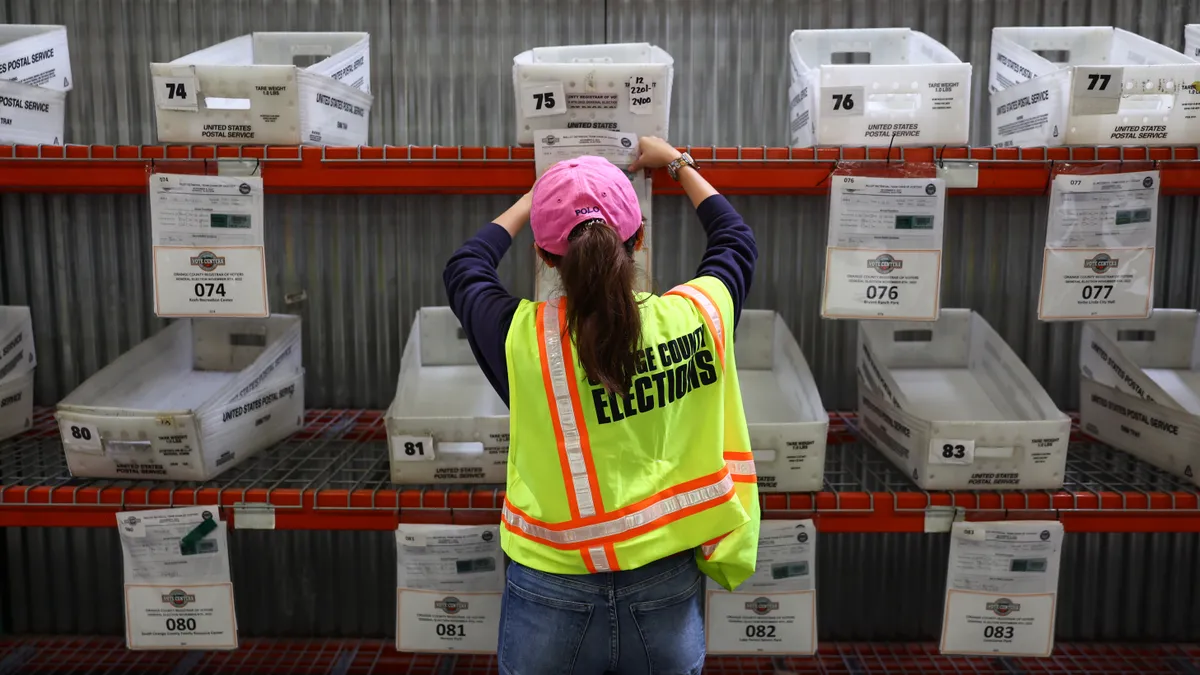Recent research and polling point to voters’ growing interest in supporting climate action, and the important role state and local policy plays.
At those levels, referendums play a role in making voters feel heard, said attorney Jillian Blanchard, director of Lawyers for Good Government’s climate change program. In general, “the less people feel like they can rely on their legislators to make good decisions and pass good laws for them at the state level, the more likely you're going to turn to these types of ballot measures to try and make sure that money goes into these funds.”
2020 saw numerous climate finance considerations on state and local ballots. Voters in Denver, for example, approved a 0.25% sales and use tax increase to establish its Climate Protection Fund, which was projected to raise $40 million annually. The fund committed $57 million in 2021 to projects in sustainable transportation, renewables and more.
In 2022, 132 ballot measures across 37 states and the District of Columbia qualified for the November election, 53 of which were referred by state legislators. No more than 2% of those measures address the environment, according to an analysis by the Ballot Initiative Strategy Center, far fewer than those focused on democracy, criminal legal reform, economic justice, fiscal policy and other areas.
Even if a bond measure is approved, climate advocates’ work isn’t done, Blanchard explained. “We still need the legislators to take the action to be able to spend those funds correctly the way the voters intended.”
In this election cycle, climate action is “really going to come down to the state legislatures because there's so much that can be done by states, either to help or to hinder climate policy,” Blanchard said. Election outcomes can also influence whether states enact laws preempting local action on the environment and climate change.
Ultimately, the outcomes of mayoral contests and a slew of state-level positions will chart what’s next, particularly as these leaders are tasked with implementing federal funds from the Inflation Reduction Act. As the dust settles after the elections, “it's just going to be even more important that our state and local leaders take the lead on climate action,” Blanchard said.
Here are some state and local measures with climate implications:
In California, Proposition 30 would raise $3.5 billion to $5 billion to support efforts to slow climate change and combat air pollution. Of that funding, 45% would go toward helping pay for zero-emission vehicles, 35% to charging stations and 20% to wildfire response and prevention. The funds would come from an additional 1.75% tax on taxpayers who earn more than $2 million each year, on their share of income above $2 million. The tax would begin in 2023 and potentially end in 2043, or sooner if the state achieves certain greenhouse gas emissions reductions.
Also statewide, New York voters will decide on Proposition 1, the Clean Water, Clean Air, and Green Jobs Environmental Bond Act of 2022. If approved, the bond measure would open up $4.2 billion to support the state’s natural resources and minimize the impacts of climate change. Of that funding, at least $1.1 billion would go toward restoration and flood risk reduction, up to $1.5 billion toward climate change mitigation, up to $650 million toward open space land conservation and recreation and at least $650 million toward water quality improvement and resilient infrastructure.
Rhode Island has a bond measure that could allocate $50 million toward environmental and recreational projects, with $16 million earmarked for municipal resiliency, largely to protect against flooding and other storms exacerbated by climate change. Another $5 million would go toward a small business energy loan program and $2 million toward a local recreation development matching grant program, among other categories.
In Colorado, numerous municipalities put climate action on the ballot. A potential short-term rental tax in Aspen could generate $9.14 million in city revenue. While at least 70% would fund affordable housing projects, the remainder is intended for infrastructure repair and environmental protection initiatives.
More broadly, Boulder is weighing a climate tax that could raise $6.5 million annually, effectively combining and replacing the existing climate action plan and utility occupation taxes, which currently generate about $3.9 million each year, according to the city. Funds would support wildfire resilience as well as direct cash assistance for energy efficiency upgrades, among many other priorities. The city also seeks bonding authority from voters to borrow against the climate tax to accelerate climate action by issuing debt that would be repaid with its future revenues.
Meanwhile, Denver could adopt a measure that requires more robust recycling and food waste diversion infrastructure across businesses and residential properties. In addition, voters will have the opportunity to follow up on their 2020 approval of the Climate Protection Fund. That tax raised more money than anticipated, and now the city and county are asking whether they can retain and spend all 2021 revenues as well as whether they can continue to impose and collect the tax to its full extent.
| State | Jurisdiction | Title | Scale | Status |
|---|---|---|---|---|
| California | Statewide | Prop. 30 | Would raise $700M to $1B annually toward wildfire response and prevention and $2.8B to $4B toward zero-emission vehicle purchases and charging | TBD |
| Colorado | Aspen, Boulder, Denver | Issue 2A, Measure 2A, Referred Question 2J + Initiated Ordinance 306 | Would raise $9.14M, <30% for environmental protection; Would raise $6.5M for climate action, wildfire resilience; Would keep all previous revenue from Climate Protection Fund, continue the tax + Would require recycling, composting access across businesses, apartment complexes, etc. | TBD |
| New York | Statewide | Prop. 1 | Would issue $4.2B in bonds to climate change mitigation, water infrastructure, etc. | TBD |
| Rhode Island | Statewide | Question 3 | Would issue $50M in bonds for environmental and recreation purposes | TBD |
























